Effective Remote Work Communication with Zight

Deliver A Clear Message, Efficently
From language barriers to time zone differences, overcome communication obstacles with visual communication.

Communicate intricate instructions in seconds.

Avoid wordy chat and email threads.

Increase team collaboration and productivity.

Improve alignment and understanding.
Flexible Communication with Visual Async
Clearly convey your thoughts with the click of a button, no matter where you are in the world or your schedule. Zight provides versatility and adaptability for remote workers across the globe.
Visuals Add Context & Clarity
Communication is always nuanced and complex, and even when you think something should be simple to understand, it may not be to the person trying to understand it. Adding a video or screenshot to an accompanying message provides 100x more clarity than even the most thoughtfully composed email or chat message. Learn More

Stay On The Same Page, From Anywhere
Scheduling time for distributed teams to collaborate can be challenging. Some team members may feel pressured to attend early or late meetings to keep connected with their coworkers and ensure they feel up-to-date and aren’t missing out. Using asynchronous video updates helps keep teams on the same page anytime and anywhere. They can review information at a time that is convenient for them and helps avoid repetitive conversations. Learn More

Get More Done In Your Day
Overcome time-consuming communication challenges to boost productivity. Clear communication helps streamline workflows to help you get your work done faster. With easily sharable links and visual context, you can avoid wasting time on miscommunications, repetitive conversations, chat battles, and finding the right words for that lengthy email. Learn More

Be More Than Words On A Screen
Videos are a great way to add a personal touch to communications even when you can’t connect in person. Being able to see the face and hear the voice of the person you are interacting with helps build more interpersonal connections. Use screen recordings with a video overlay or record a video to give that coworker a shout-out for a job well done. Learn More

-

All-in-one App
No need to keep track of multiple solutions for screenshots, videos, screen recordings and gifs. Take a full or partial screenshot or dynamically record your screen as a video or gif in to a unified application.
-
Annotations
Add clarity with annotations. Use quick drawings, arrows, lines, emojis and other shapes. Blur any sensitive information or help bring attention to important details that might be overlooked or hard to find.
-

Analytics
Be in the know. See how many views and who has viewed your content. Weekly productivity reports help you recap your own productivity with the items viewed and time saved.
-

Embed
Easily embed content without having to write any code. Sharing methods offer an embed code you can easily copy and paste wherever you want your content to appear.
-

Collections
Create folders to store and organize your content creations. Find items faster and share items with team members easier.
-

Shortcuts
Have a workflow that works for you? Customize your shortcuts to whatever suits you in preferences.



Our Customers Love Us
Best. App. Ever. You’ve made supporting customers and training newer members of the team remotely so easy and simple. Thank you!
Janice Burch, Customer Support | Basecamp
I’m a big fan and have used it daily for many years now.
Mark DiCristina, VP of Marketing | Mailchimp
Zight lets us pinpoint what texts we are talking about and what part of the UI needs to be changed. And just cut out a lot of that back-and-forth in-between.
Christine Yen, Founder and CPO | Honeycomb
The Ultimate Guide To Remote Work
Remote work, also known as telecommuting or teleworking, is a working arrangement that allows employees to perform their job duties from locations outside of the traditional office setting. This can include working from home, coworking spaces, coffee shops, or any place with an internet connection. Remote work leverages technology to enable communication, collaboration, and productivity without requiring employees to be physically present in a centralized office.
Key Aspects of Remote Work
- Flexibility: One of the primary benefits of remote work is the flexibility it offers. Employees can often set their own schedules, balancing work commitments with personal responsibilities. This flexibility can lead to improved work-life balance and increased job satisfaction.
- Technology: Remote work relies heavily on technology. Tools such as video conferencing (Zoom, Microsoft Teams, Zight screen recorder), communication platforms (Slack, Microsoft Teams), project management software (Asana, Trello), and cloud storage (Google Drive, Dropbox) are essential for remote teams to stay connected and collaborate effectively.
- Independence: Remote work requires a high degree of self-discipline and independence. Employees must manage their time effectively, stay motivated, and maintain productivity without direct supervision.
- Communication: Clear and consistent communication is crucial in a remote work environment. Since team members are not in the same physical space, regular check-ins, virtual meetings, and updates are necessary to ensure everyone is on the same page.
- Work Environment: Remote workers have the flexibility to create their ideal work environment. This could mean setting up a dedicated home office, working from various locations, or even becoming a digital nomad, traveling while working.
Benefits of Remote Work
- Increased Productivity: Many studies have shown that remote workers can be more productive than their office-based counterparts. The absence of commuting, fewer office distractions, and the ability to create a personalized work environment contribute to this increased productivity.
- Cost Savings: Both employees and employers can benefit from cost savings. Employees save money on commuting, work attire, and meals, while employers can reduce expenses related to office space, utilities, and supplies.
- Access to a Global Talent Pool: Remote work allows companies to hire the best talent regardless of geographical location. This can lead to more diverse and skilled teams.
- Improved Work-Life Balance: Remote work offers employees the ability to better balance their professional and personal lives. This can lead to higher job satisfaction, lower stress levels, and improved overall well-being.
- Environmental Impact: Remote work can reduce the carbon footprint associated with commuting and office operations. Fewer people commuting means fewer cars on the road and lower greenhouse gas emissions.
Challenges of Remote Work
- Isolation: Working remotely can sometimes lead to feelings of isolation and loneliness, as employees miss out on the social interactions that come with working in an office.
- Communication Barriers: Without face-to-face interactions, miscommunications can occur more easily. It’s important for remote teams to establish clear communication protocols and use effective communication tools.
- Work-Life Boundaries: Remote workers may find it challenging to separate work from personal life, leading to overwork and burnout. Setting clear boundaries and having a dedicated workspace can help mitigate this issue.
- Security Concerns: Remote work can pose cybersecurity risks, as employees may use personal devices and unsecured networks. Companies need to implement robust security measures to protect sensitive information.
- Management and Supervision: Managing a remote team requires different skills and approaches compared to managing an in-office team. Managers need to trust their employees and focus on results rather than monitoring activities.
What are remote work jobs?
Remote work jobs are roles that can be performed from anywhere, typically outside of a traditional office environment. They leverage technology to allow employees to work from home, co-working spaces, or any location with an internet connection. Here are some common types of remote work jobs:
- Customer Support Representative: Handling customer inquiries and support requests via phone, email, or chat.
- Software Developer/Engineer: Writing and maintaining code for software applications, websites, or mobile apps.
- Content Writer/Editor: Creating and editing written content for websites, blogs, marketing materials, and more.
- Digital Marketer: Managing online marketing campaigns, including SEO, PPC, social media, and email marketing.
- Graphic Designer: Designing visuals for websites, marketing materials, product packaging, and more.
- Virtual Assistant: Providing administrative support to businesses or entrepreneurs, such as scheduling, email management, and research.
- Project Manager: Overseeing projects from inception to completion, coordinating teams, and ensuring deadlines are met.
- Sales Representative: Managing sales processes, reaching out to potential clients, and closing deals.
- Data Analyst: Analyzing data to help businesses make informed decisions.
- Translator: Converting written content from one language to another.
- Online Tutor/Teacher: Providing educational instruction and support to students via online platforms.
- Social Media Manager: Managing and creating content for social media accounts to engage and grow an audience.
- IT Support Specialist: Providing technical support to users, troubleshooting hardware and software issues remotely.
- Business Consultant: Offering expert advice to improve business operations and strategies.
These roles often require good communication skills, self-discipline, and proficiency with various digital tools and platforms.

What companies hire work from home jobs?
Many companies across various industries hire for work-from-home positions. Here are some examples:
Technology Companies:
- Microsoft: Offers remote positions in software development, customer support, and more.
- Amazon: Hires for remote roles in customer service, IT, and other departments.
- Apple: Often has remote opportunities, particularly in customer support.
- Google: Provides remote work options in various roles, including engineering and marketing.
- Dell: Promotes a flexible work culture with many remote job opportunities.
Communication and Collaboration Tools:
- Slack: Offers remote positions in software development, customer success, and marketing.
- Zoom: Hires for remote roles in customer support, sales, and engineering.
Healthcare:
- UnitedHealth Group: Offers remote positions in healthcare administration, customer service, and IT.
- CVS Health: Provides remote roles in pharmacy services, customer support, and project management.
Financial Services:
- American Express: Hires remote workers for customer service, sales, and travel consulting.
- Wells Fargo: Offers remote positions in customer service, IT, and financial consulting.
Education and E-Learning:
- VIPKid: Hires remote English teachers to teach Chinese students.
- K12: Offers remote teaching and administrative roles in online education.
Media and Publishing:
- The New York Times: Provides remote opportunities in journalism, editing, and digital media.
- Conde Nast: Hires for remote roles in writing, editing, and digital marketing.
Customer Service:
- TTEC: Hires remote customer service representatives and sales agents.
- Sykes: Offers remote positions in customer support and technical assistance.
E-commerce and Retail:
- Shopify: Hires for remote roles in customer support, development, and marketing.
- Wayfair: Offers remote positions in customer service, sales, and IT.
Other Notable Companies:
- Automattic: The company behind WordPress.com, offers remote roles in development, design, and customer support.
- GitHub: Provides remote work opportunities in software development, customer success, and marketing.
- Basecamp: Offers remote positions in project management, software development, and customer support.
These companies often post remote job openings on their websites, as well as on job boards like LinkedIn, Indeed, and Glassdoor.
What tools should I use for remote jobs?
Remote work relies on a variety of tools to facilitate communication, collaboration, project management, and productivity. Here are some essential tools, including Zight, that you can use for remote work:
Communication Tools:
- Zight: Formerly known as CloudApp, Zight enables screen recording, GIF maker, and screenshot annotation, making it easy to share visual content and communicate more effectively.
- Slack: A messaging app for teams that supports real-time communication, file sharing, and integrations with other tools.
- Zoom: A video conferencing tool for virtual meetings, webinars, and collaboration.
- Microsoft Teams: A collaboration platform that includes chat, video meetings, file storage, and app integration.
- Google Meet: A video conferencing tool integrated with Google Workspace for meetings and collaboration.
Project Management Tools:
- Trello: A visual project management tool that uses boards, lists, and cards to organize tasks and projects.
- Asana: A task and project management tool that helps teams track work and manage projects.
- Jira: A project management tool tailored for software development teams, with features for tracking issues and agile project management.
- Basecamp: A project management and team collaboration tool with to-do lists, file sharing, and messaging.
File Sharing and Collaboration Tools:
- Google Workspace: A suite of productivity tools including Google Drive, Docs, Sheets, and Slides for file creation, sharing, and collaboration.
- Dropbox: A cloud storage service for file sharing and collaboration, with integrations for various productivity tools.
- Microsoft OneDrive: A cloud storage service integrated with Microsoft Office for file sharing and collaboration.
- Notion: An all-in-one workspace for note-taking, project management, and collaboration.
Productivity Tools:
- Zight: In addition to communication, Zight helps with productivity by allowing quick sharing of visual content, reducing the need for lengthy explanations.
- Evernote: A note-taking app that helps you organize your ideas, tasks, and projects.
- Todoist: A task management tool that helps you organize and prioritize your to-do lists.
Time Management Tools:
- Toggl: A time tracking tool that helps you track the time spent on tasks and projects.
- RescueTime: A time management tool that tracks your activities and provides insights to improve productivity.
- Clockify: A time tracking tool for tracking work hours and managing projects.
Security Tools:
- LastPass: A password manager that helps you securely store and manage passwords.
- NordVPN: A virtual private network (VPN) service that ensures secure and private internet access.
These tools can help you stay connected, organized, and productive while working remotely.

How can Zight help with my remote job?
Here are several ways you can leverage Zight to improve your remote work experience:
1. Visual Communication:
- Screen Recording: Record your screen to demonstrate processes, provide tutorials, or explain complex concepts visually. This can save time and reduce misunderstandings compared to lengthy written instructions.
- GIF Creation: Create GIFs to show quick visual instructions or highlight specific parts of a process. GIFs are useful for repetitive tasks or quick tips.
- Annotated Screenshots: Capture and annotate screenshots to provide clear, visual feedback or to highlight important information in documents, presentations, or web pages.
2. Collaboration:
- Shareable Links: Easily share your recordings, GIFs, and annotated screenshots with colleagues via shareable links. This simplifies collaboration and ensures everyone is on the same page.
- Comments and Feedback: Use Zight’s commenting features to gather feedback on shared visual content. This can speed up the review process and improve the quality of collaborative work.
3. Customer Support:
- Visual Solutions: Use screen recordings and annotated screenshots to provide customers with visual solutions to their problems. This can improve customer satisfaction and reduce resolution times.
- Tutorials and Demos: Create visual tutorials and demos for customers, helping them understand how to use your product or service more effectively.
4. Onboarding and Training:
- Training Materials: Develop visual training materials for new hires, making it easier for them to understand company processes and tools.
- Recorded Meetings: Record training sessions or important meetings so new hires or team members in different time zones can watch them at their convenience.
5. Project Management:
- Progress Updates: Provide visual progress updates to your team or stakeholders using screen recordings or annotated screenshots. This can make status reports more engaging and informative.
- Task Explanations: Use visuals to explain tasks or project requirements clearly, reducing the likelihood of misunderstandings.
6. Product Development:
- Bug Reporting: Record your screen to show developers exactly how to reproduce a bug or issue. Annotated screenshots can also highlight specific areas of concern.
- Feature Demos: Share visual demos of new features or updates with your team to gather feedback and ensure everyone understands the changes.
7. Marketing and Sales:
- Visual Content: Create engaging visual content for marketing campaigns, social media, or presentations. Zight’s tools can help you produce high-quality visuals quickly.
- Personalized Demos: Record personalized product demos for potential clients, making your sales pitches more compelling and tailored to their needs.
By incorporating Zight into your remote work routine, you can enhance communication, streamline collaboration, and boost overall productivity.
What companies use Zight to improve their remote work?
Zight (formerly CloudApp) is used by a wide range of companies to enhance communication and productivity in remote work settings. Here are some notable companies that leverage Zight for their remote work needs:
Technology Companies:
- Adobe: Uses Zight for quick feedback and collaboration on design projects.
- Uber: Utilizes Zight for training and onboarding, as well as for efficient communication among remote teams.
- Salesforce: Employs Zight for seamless sharing of visual content, enhancing team collaboration and productivity.
Media and Publishing:
- The New York Times: Uses Zight for visual communication and collaboration among journalists and editors.
- BuzzFeed: Employs Zight for content creation and quick feedback loops.
E-commerce:
- Shopify: Uses Zight for customer support, allowing support teams to provide clear, visual instructions and solutions.
- Zendesk: Utilizes Zight to improve customer service interactions through visual explanations and screen recordings.
Design and Creative Agencies:
- InVision: Uses Zight for design collaboration, enabling teams to share and discuss visual content easily.
- Basecamp: Employs Zight for project management and team communication, allowing for quick sharing of visual updates.
Educational Institutions and Platforms:
- Coursera: Uses Zight for creating educational content and providing visual feedback to students.
- Khan Academy: Utilizes Zight to develop instructional videos and tutorials.
Other Notable Companies:
- Slack: Uses Zight internally to enhance team communication and support.
- Trello: Employs Zight for project management and team collaboration, making it easier to share visual content and updates.
- Intercom: Uses Zight to provide better customer support and improve internal communication.
These companies use Zight to streamline communication, enhance collaboration, and increase productivity, making it an essential tool for remote work environments.
Zight for Every Team
Learn more ways teams are using Zight.









